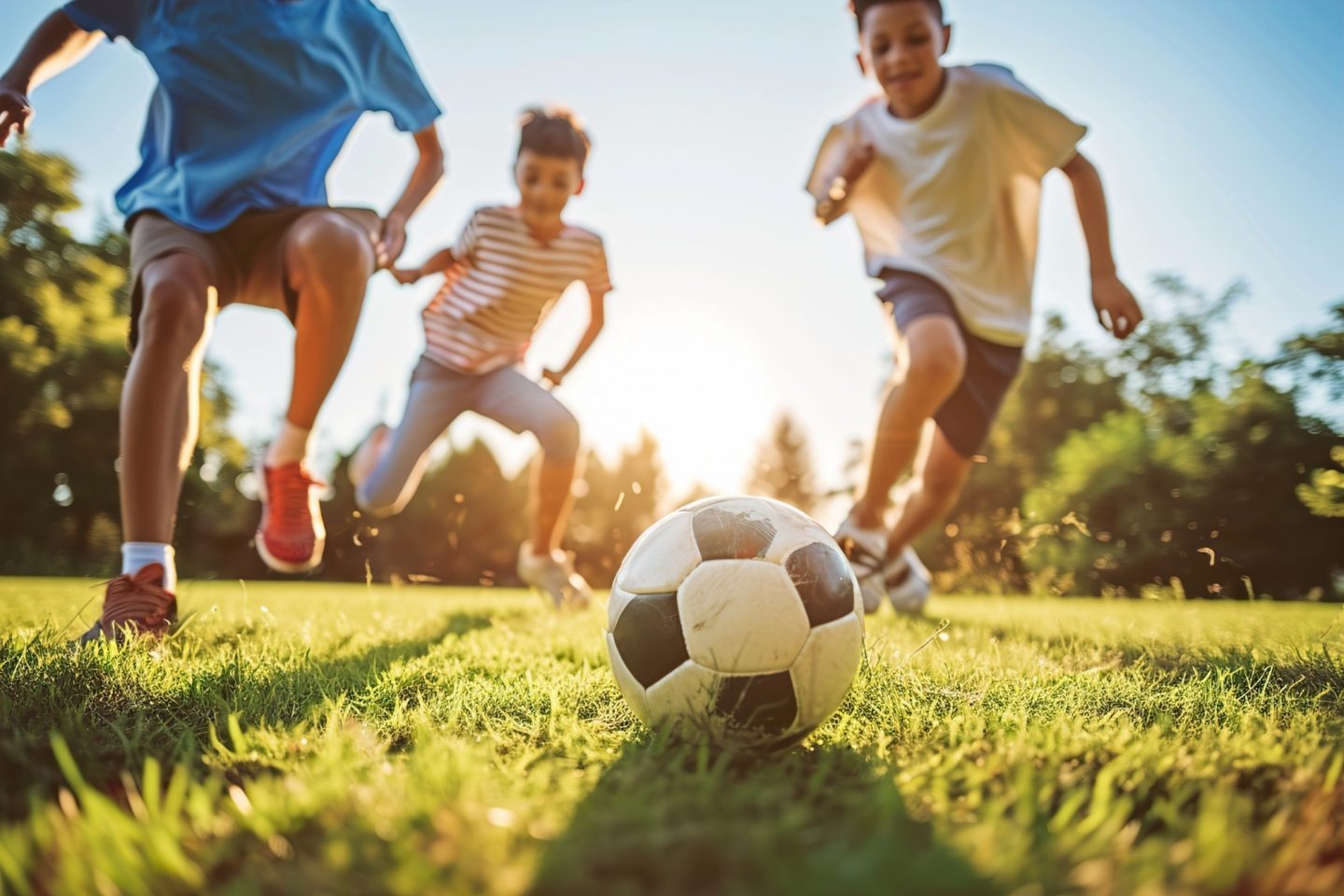
Navigating a young athlete’s path includes a range of experiences from thrilling victories and personal records to inevitable injury setbacks. When injuries occur, it’s crucial for parents to play a supportive role, ensuring that recovery isn’t just about physical healing but also about maintaining the child’s morale and love for the sport.
This guide provides detailed insights into supporting your child’s sports journey, with a focus on safely managing injuries and applying informed practices.
1 – Understand Sports Injuries
Sports injuries in young athletes range from mild, like sprains and muscle strains affecting ligaments and muscles, to severe conditions such as bone fractures and concussions, impacting the skeleton and brain. The causes behind these injuries are multifaceted, often stemming from:
- Overuse: This involves repetitive motion, leading to stress on specific body parts.
- Inadequate Warm-Up: This involves skipping pre-activity stretches and exercises that prepare the body.
- Improper Technique: This involves incorrect form or execution of sports movements.
- Accidents: This involves unpredictable collisions or falls during sports activities.
Recognizing these injuries early is crucial. Symptoms include pain, swelling, limited mobility, dizziness, and confusion, varying with the nature of the injury. This initial step is fundamental in ensuring timely and appropriate interventions, safeguarding your young athlete’s health and sporting future.
2 – Seek Professional Help
When a young athlete sustains an injury, immediate consultation with a healthcare professional is imperative for a secure and effective recovery journey. For instance, specialists in sports injury therapy, equipped with a profound understanding of sports-related ailments, are ideally positioned to provide personalized advice and develop recovery plans attuned to the unique needs of the young sportsperson. Their expertise speeds up recovery and helps prevent future injuries.
By meticulously examining your young athlete’s technique, training regimen, and overall physical condition, these professionals can identify and rectify any underlying factors that may predispose them to injuries.
3 – Initiate Immediate Response To Injuries
In the critical moments following a sports injury, the R.I.C.E method is a foundational first aid response, encapsulating Rest, Ice, Compression, and Elevation. This approach is instrumental in mitigating pain and swelling, setting the stage for a more favorable recovery trajectory. Rest is essential to prevent further strain or damage, while the application of ice reduces inflammation and numbs the affected area. Compression, typically through bandages, aids in minimizing swelling, and elevation of the injured part above heart level further alleviates swelling by reducing blood flow to the area.
However, this method is a preliminary step, not a substitute for professional medical evaluation and treatment. Adhering to healthcare professionals’ specific guidance ensures that the R.I.C.E method is applied effectively and appropriately, tailored to the nature and severity of the injury.

4 – Ensure Long-Term Recovery And Rehabilitation
The path to healing after a sports injury is a progressive journey transcending initial medical interventions. Engaging in rehabilitation exercises under the guidance of a physical therapist is paramount for reinstating the injured area’s strength and flexibility to its former state. As parents, your support during rehabilitation is vital. Encourage your child to follow their exercise plan and join them in therapy sessions, creating a supportive recovery environment.
5 – Encourage Proper Rest And Recovery
For young athletes, the zeal to dive back into their sport can lead to premature resumption of activities, risking further injury. It’s crucial to stress the importance of proper rest and recovery. Explain that rushing can result in re-injuries or ongoing health problems. By setting expectations for a gradual return to sport, you should safeguard your child’s long-term health and athletic prospects.
6 – Provide Psychological Support During Recovery
The emotional toll of sports injuries often goes unnoticed, yet it significantly affects young athletes. Feelings of frustration, sadness, and a hit to self-esteem are common. In these moments, parental support is invaluable. Active listening, validating emotions, and encouraging a positive outlook can strengthen your child’s mental resilience and help them overcome psychological challenges during recovery.
7 – Preventing Future Injuries
Proactive measures to prevent injuries are as critical as managing them post-occurrence. This entails the utilization of appropriate sports gear, adherence to dynamic warm-up and cool-down exercises, and participation in sport-specific conditioning programs. Together, these strategies are crucial in protecting young athletes from common injuries, leading to a safer and more sustainable sports experience. By instilling these preventive practices, you can significantly diminish the likelihood of your child encountering future injuries.
8 – Understand The Role Of Nutrition And Hydration
Nutrition and hydration are the cornerstones of your young athlete’s health, significantly influencing recovery and performance. A well-rounded diet rich in essential nutrients supports tissue repair and strengthens the immune system while staying adequately hydrated ensures optimal physiological function and performance. As parents, you can contribute to your child’s athletic success and recovery by ensuring access to wholesome, balanced meals and encouraging regular fluid intake, laying a foundation for robust health and resilience against injuries.
9 – Build A Supportive Community
Fostering a nurturing environment extends beyond the familial circle, incorporating coaches, teammates, and other parents into a cohesive support network. This collective backing provides a multifaceted support system, offering emotional encouragement, shared experiences, and a sense of camaraderie. Such a community aids in the recovery phase and enriches the overall sports journey, making it a more positive and inclusive experience for the young athlete.
Takeaway
Supporting your child through their sports journey, especially through injuries, requires patience, understanding, and a proactive approach to their physical and emotional well-being. By keeping the information mentioned above in mind, you can help your child navigate the challenges of sports injuries and return to their beloved activities with resilience and confidence.
Photos courtesy of Adobe.







